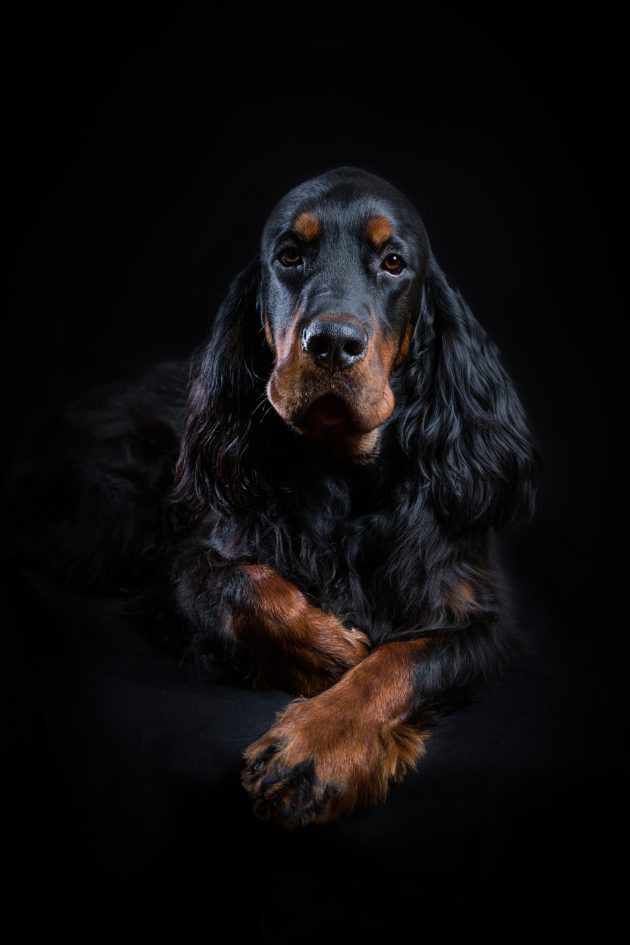
You need only watch the first few seconds of the video clip below to see how we felt when Craig Koshyk’s new book arrived on our doorstep the other day:
Yes, we were excited enough to race around the house and squeal,, “Craig Koshyk’s new book is here, Craig Koshyk’s new book is here!!”
We’ve owned the first of Koshyk’s series on Pointing Dogs: “The Continentals” since it was published in 2011, and we still haven’t absorbed everything Koshyk put into it. Still, we were impatient for his new book, “Volume Two: The British and Irish Breeds” to come out because Koshyk is equal parts photographer and writer.
Oh, the photographs!
But what we most admire about Craig’s books is the incredible amount of research that have gone into them. “Daunting” comes to mind as we behold the juxtaposition of a breed’s history, its hunting style, statistics and real life observations.
We best stop here lest readers suspect we’re on his payroll (we’re not). We’re just big fans.
It is in Craig’s latest book that we learn that the Gordon Setter’s name didn’t officially become known by that name in the UK until 1924 when the Kennel Club changed it. Both in the United States and in the UK, the breed had been known as the Black and Tan Setter, though the switch in America came far earlier when the newly formed Gordon Setter Club asked the AKC in 1891 (one of its first acts, actually) to accept “Gordon Setter” as the breed’s official name. As an aside, the breed first arrived in the United States in 1842 (thank you, Daniel Webster and George Blunt).
“Civilians” (which is to say people who aren’t fanciers or professionals in the dog world) widely assume that the breed was named after Alexander Gordon, the fourth Duke of Gordon because he “invented” it. Technically, he didn’t. Others during the same time period been breeding these black and tan setters, as well, and such dogs had been around long before the Duke or his contemporaries began breeding them. In those earlier days, the dogs were called “black and fallow setting dogs.”
That said, the Duke did play a major role in developing the breed as we know it today. Where he found the time is anyone’s guess.
As an adult, Gordon was a Scottish representative peer, a Knight of the Thistle, and was made a Peer of Great Britain. He was Keeper of the Great Seal of Scotland, raised the 92nd Regiment of Foot in 1794 for the French Revolutionary Wars (a regiment also known as the Gordon Highlanders), and established the villages of Fochabers, Tomintoul, and Portgordon in Banffshire. An enthusiastic sportsman, the Duke established his kennels at Gordon Castle, but the setters in those kennels looked more like field English Setters than the rich black and tans we know today, and how they acquired their modern coloring is a topic for another post. The Duke valued working ability, and his setters were indeed prized for their talent on the moors. They came to be called Gordon Castle Setters, and little doubt that the breed’s eventual name change from Black and Tan Setters or Gordon Castle Setters to Gordon Setter was an homage to the man who produced the outstanding “strain” of setters, and formalised the breed standard in 1820. Indeed, by the early 20th century, most Gordon Setters could be traced back to the Duke’s kennels at Gordon Castle.
In 2020, the online magazine, Countrylife, gave Scotland’s only gundog its due with a lovely feature extolling it as a breed that “deserves consideration.” The photographs in the article are stunning, but the warning that the rare breed was suffering in numbers was critical. Last year in 2022, only 251 Gordon Setters were registered with the Kennel Club, a far cry from the over six hundred that were registered in the 1980s. This is serious if a breed is to maintain a sound gene pool by avoiding inbreeding depression or a genetic bottleneck. Preservation breeders are well aware of this, and we’ve been told that breeding programs are doing more importing to increase genetic diversity, while using “popular sires” less. We defer to Gordon Setter fanciers on the accuracy of this, but it’s encouraging if so.
We circle back to where we started – Craig Koshyk’s new book – and offer a hat tip to the author for mentioning the challenges facing a less common breed, and sharing global breed numbers to make the point.
To conclude, we also have a point to make: In an age of “doodles,” it’s important to remind potential owners of our heritage breeds. Not that long ago, gardeners “rediscovered” the standard fruits and vegetables that generations had been growing for centuries before commercial hybrids came along in the 1950s through 1970s. Today, heirloom plants are prized for their taste and quality. Surely, if a tomato is deserving of a second look, a breed famous for having “Beauty, Brains and Bird Sense” is, as well.
Image of Gordon Setter © Onepony | Dreamstime
